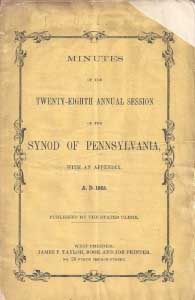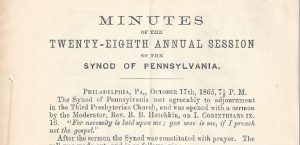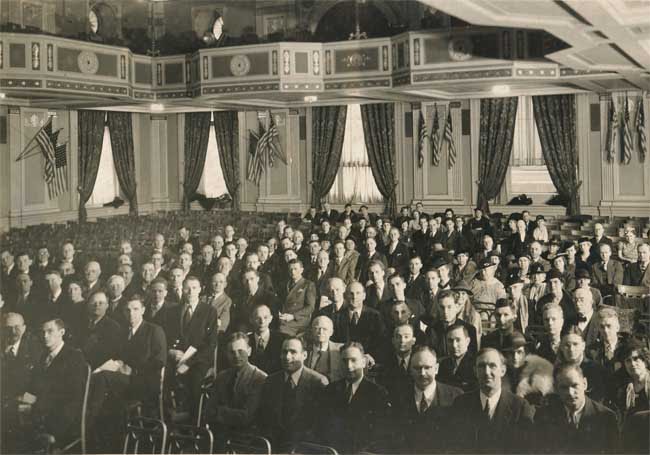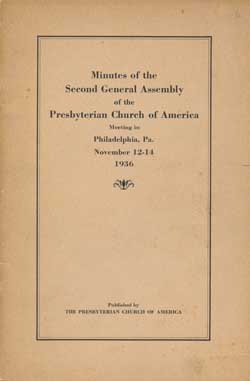STUDIES IN THE WESTMINSTER SHORTER CATECHISM
by Rev. Leonard T. Van Horn
Q. 48. — What are we especially taught by these words, “before me,” in the first commandment?
A. — These words, “before me,” in the first commandment, teach us that God, who seeth all things, taketh notice of, and is much displeased with, the sin of having any other god.
Scripture References: I Chron. 28:9; Ps. 44:20-21.
Questions:
1. How is it possible for God to see all things?
It is possible for God is every where present and has infinite understanding. The Bible says, “Can any hide himself in secret places, that I shall not see him? saith the Lord: do not I fill heaven and ,earth?” (Jer. 23:24) He is omniscient (knowing everything) as well as omnipresent (present every where at the same time) – Ps. 139. He knows us with perfect knowledge. o
2. How can Christians commit the sin of having other gods?
Christians can commit this sin by. allowing their interest and their affections to be set upon other things and by allowing those things to hold first place in their thoughts and activities.
3. Why is God so displeased with this sin?
God Is displeased with this sin because He is a jealous and a holy God. The Bible teaches,”I am the Lord, that is my name: and my glory will I not give to another, neither my praise to graven images.” (Isa.42:8)
4. Should not the fact that He is a jealous and a holy God influence our every action?
Yes, our every action should be influenced by this fact. It should keep us from sin; it should give us a hatred of the very thought of sin; it should quicken us moment by moment to make the prayer as stated in the hymn:
“I want a principle within Of watchful, godly fear,
A sensibility of sin, A pain to feel it near.
Help me the first approach to feel
Of pride or wrong desire;
To catch the wandering of my will,
And quench the kindling fire.”
—Charles Wesley.
THE GOD THAT REVEALETH SECRETS
The knowledge that God sees all things should always be recognized by the believer. It should always be held before him as a ·burning lamp. In Daniel 2:28 we read, “There is a God in heaven, that revealeth secrets.” Now the secrets He revealed in that particular case were for His glory. Many times He acts to His glory too in the revealing of the secrets of our hearts. We can not flee Him, we can not hide anything from Him .. There is certainly a good lesson for the believer in
Francis Thompson’s famous words:
“I fled Him, down the nights and down the days;
I fled Him, down the arches of the years;
I fled Him, down the labyrinthine ways
Of my own mind; and in the mist of tears
I hid from Him, and under running laughter.”
But all the fleeing did no good; God continued “with unhurrying chase, and unperturbed pace.” And God will always continue asking us to be honest with Him, to hide nothing from Him, to go all the way with Him. Through it all there is the knowledge, there should be the knowledge on our hearts, that He is in heaven and He revealeth secrets!
There is still another comfort in the fact that He revealeth secrets. This Is the comfort that some day we will understand His ways. He will bring to light the hidden things of darkness. He will make us to understand why He permitted this or that misfortune to come into our ways. He will enable us to see why He delayed so long the coming of His Son, our Savior. He will show us why it was necessary for His true church to be persecuted. 0 blessed Day when the secrets are opened up to us!
The question we have before us is important: Can we be satisfied to live in these days ‘When the counsel of His will is secret? Can we go on day by day trusting Him even when we can not trace the way? Can we live on the one hand knowing that He knows the secrets of our hearts, and on the other hand knowing that there are many things He will not reveal to us? The secret of learning to be content, all to His glory, is found in being able to live ‘With both of these things. The Bible says, “Godliness with contentment is great gain.” (I Tim. 6:8), May God, the God who revealeth secrets, give us this contentment as we are determined to live before Him with acts of godliness (2 Peter 3:11).
Published By: The SHIELD and SWORD, INC.
Vol. 4 No. 46 (October 1964)
Rev. Leonard T. Van Horn, Editor


 When the Synod of Pennsylvania, New School, convened in the evening of Tuesday, October 17, 1865, in the Third Presbyterian Church, Philadelphia, the retiring moderator, B. B. Hotchkin, the pastor of the Marple Church, passed the gavel to Rev. Thomas J. Shepherd of First Church in the Northern Liberties, Philadelphia. The meeting was particularly significant because it was the first annual meeting following the Civil War, the assassination of President Lincoln, and the inauguration of Vice President Andrew Johnson to the presidency. Since the previous synod meeting there were many things that had changed. For the New School, one of, if not the key issue for its identity, abolition of slavery, had been achieved. There was some optimism in the land about the future, especially if one lived north of the Mason-Dixon Line, but the optimism was tenuously mixed with different ideas about how the post-war situation with the Southern states should be handled. In the North, many adamantly contended that the former Confederacy should pay a heavy price, but on the other end were others desiring to see all the states working together as a reunified nation. In the South, there were many fearing retribution, wondering if they would have food, and apprehensive of finding work in the devastated economy, however, there were also numerous others consumed with anger against the North. Between the two poles of ideas in both North and South were a myriad of other perspectives.
When the Synod of Pennsylvania, New School, convened in the evening of Tuesday, October 17, 1865, in the Third Presbyterian Church, Philadelphia, the retiring moderator, B. B. Hotchkin, the pastor of the Marple Church, passed the gavel to Rev. Thomas J. Shepherd of First Church in the Northern Liberties, Philadelphia. The meeting was particularly significant because it was the first annual meeting following the Civil War, the assassination of President Lincoln, and the inauguration of Vice President Andrew Johnson to the presidency. Since the previous synod meeting there were many things that had changed. For the New School, one of, if not the key issue for its identity, abolition of slavery, had been achieved. There was some optimism in the land about the future, especially if one lived north of the Mason-Dixon Line, but the optimism was tenuously mixed with different ideas about how the post-war situation with the Southern states should be handled. In the North, many adamantly contended that the former Confederacy should pay a heavy price, but on the other end were others desiring to see all the states working together as a reunified nation. In the South, there were many fearing retribution, wondering if they would have food, and apprehensive of finding work in the devastated economy, however, there were also numerous others consumed with anger against the North. Between the two poles of ideas in both North and South were a myriad of other perspectives.
